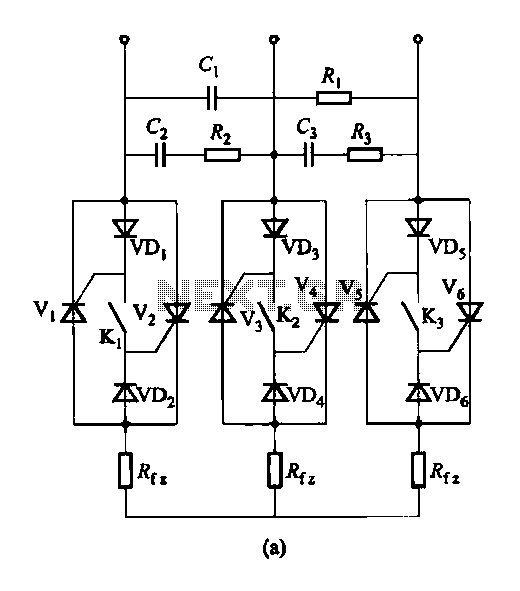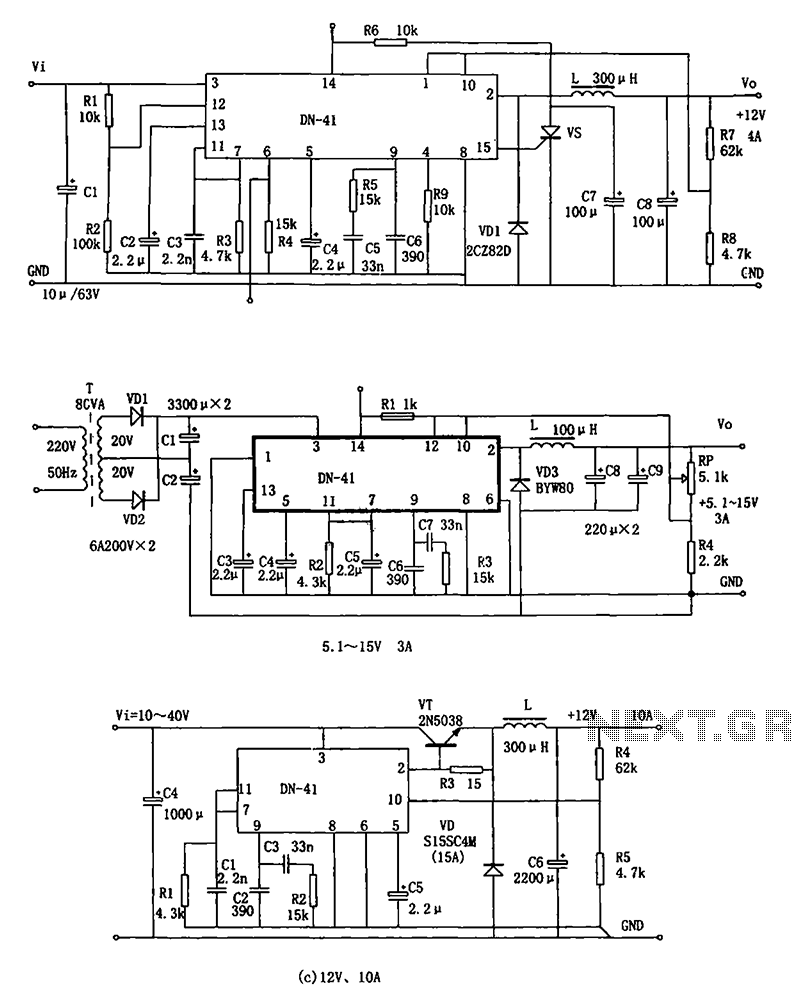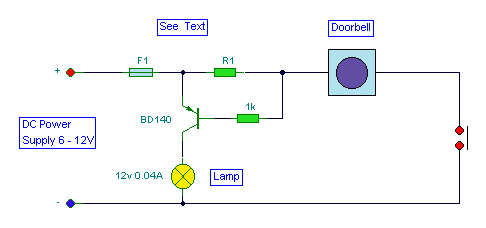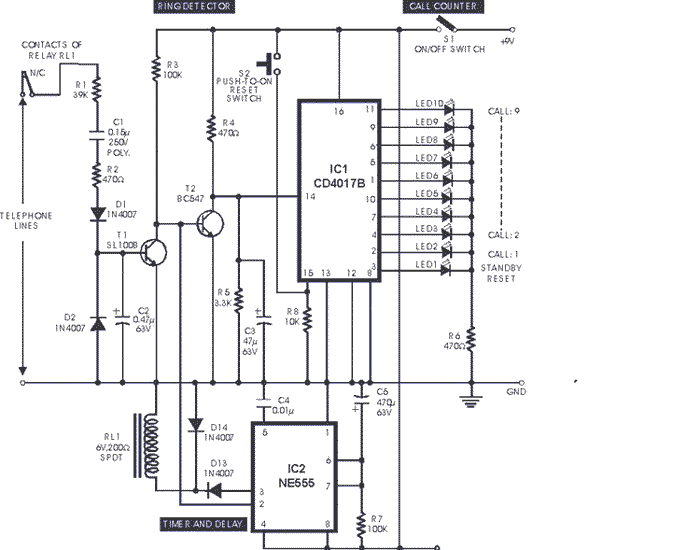
A six thyristor AC switch circuits

Figure 16-48 (a) illustrates the introduction of a six thyristor three-phase AC switching circuit, while Figure 16-48 (b) depicts the implementation of three triac circuits. These configurations are suitable for motors and other inductive loads.
The six thyristor three-phase AC switching circuit is designed to control the power supplied to inductive loads such as motors. This circuit utilizes six thyristors arranged in a bridge configuration, allowing for precise control of the AC waveform supplied to the load. Each thyristor can be triggered at specific points in the AC cycle, enabling phase control of the power delivered to the load. This method is particularly effective for applications requiring variable speed control or soft starting of motors.
In contrast, the triac circuit configuration shown in Figure 16-48 (b) employs three triacs, which are semiconductor devices capable of conducting current in both directions when triggered. This setup simplifies the control of AC power to inductive loads by allowing for bidirectional current flow, making it suitable for applications where the load may reverse direction, such as in certain motor control scenarios.
Both configurations are essential for managing the power requirements of inductive loads, providing flexibility in operation. The thyristor circuit is typically favored for heavy-duty applications due to its robustness and ability to handle higher currents, while the triac circuit is often used in lighter applications due to its ease of use and lower cost. Proper heat management and protection circuitry should be implemented in both designs to ensure reliability and longevity of the components.Figure 16-48 (a) for the introduction of six thyristor three-phase AC switching circuit; Figure 16-48 (b) as adopted by three triac circuits. Suitable for motors and other indu ctive loads.
The six thyristor three-phase AC switching circuit is designed to control the power supplied to inductive loads such as motors. This circuit utilizes six thyristors arranged in a bridge configuration, allowing for precise control of the AC waveform supplied to the load. Each thyristor can be triggered at specific points in the AC cycle, enabling phase control of the power delivered to the load. This method is particularly effective for applications requiring variable speed control or soft starting of motors.
In contrast, the triac circuit configuration shown in Figure 16-48 (b) employs three triacs, which are semiconductor devices capable of conducting current in both directions when triggered. This setup simplifies the control of AC power to inductive loads by allowing for bidirectional current flow, making it suitable for applications where the load may reverse direction, such as in certain motor control scenarios.
Both configurations are essential for managing the power requirements of inductive loads, providing flexibility in operation. The thyristor circuit is typically favored for heavy-duty applications due to its robustness and ability to handle higher currents, while the triac circuit is often used in lighter applications due to its ease of use and lower cost. Proper heat management and protection circuitry should be implemented in both designs to ensure reliability and longevity of the components.Figure 16-48 (a) for the introduction of six thyristor three-phase AC switching circuit; Figure 16-48 (b) as adopted by three triac circuits. Suitable for motors and other indu ctive loads.





